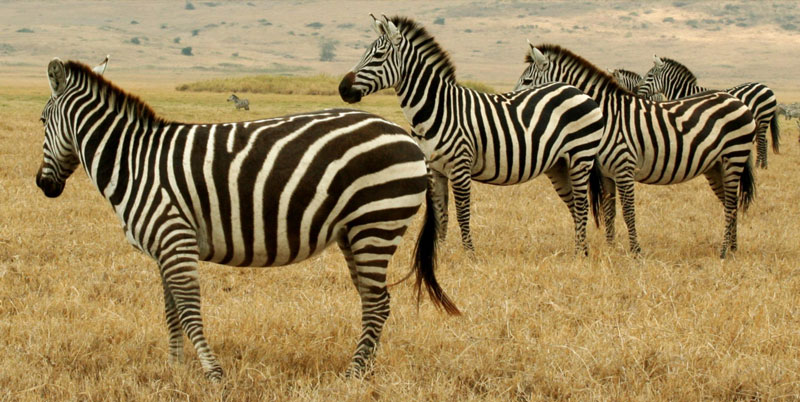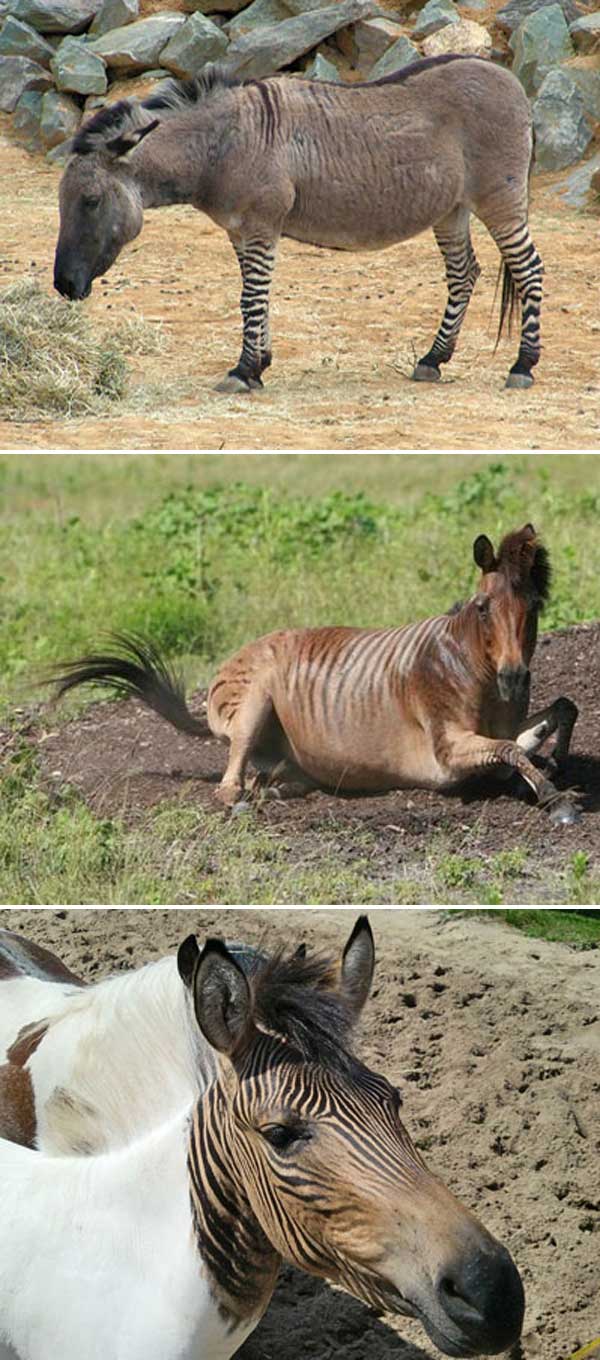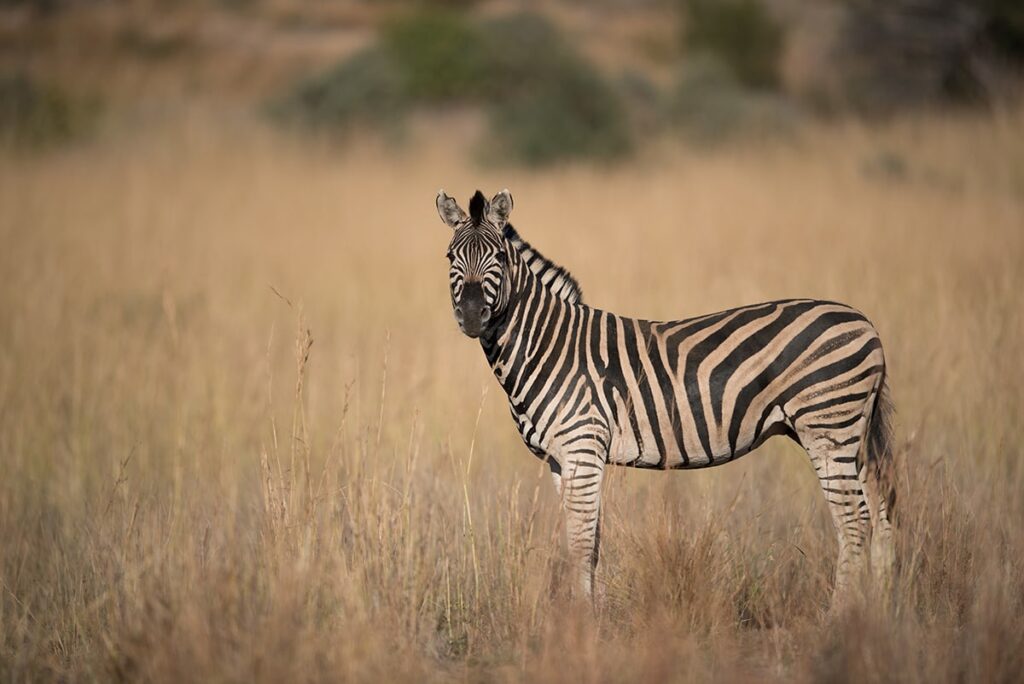1. Unique stripes: Each individual zebra has its own unique stripe pattern – just like humans have unique fingerprints
2. The function of the stripes: In relation to the landscape (savannah), the stripes of zebras are not an optimal camouflage, but the stripes serve another function; when a predator approaches a herd of zebras, it is visually confused by the many stripes. The predator has a hard time distinguishing one animal from the others, making it difficult to pick out a single prey and focus on it
3. Intersections: Zebras can mate with horses and their offspring are called ‘zebroid’ (or zedonk, zorse, zebra mule, zonkey, zebrule) in English. Most of this type of interbreeding is between a zebra stallion and a horse mare. A donkey stallion can also mate with a zebra mare, resulting in offspring called ‘hinny’ or ‘donkra’ in English
4. Social animals: Zebras are extremely social animals. For example, they can only sleep if they are in close proximity to other zebras. For survival purposes, this comes in handy as it allows zebras to warn each other of predators. Zebras also prefer to graze together, as well as grooming each other
5. Zebra herd: Zebra herds can become huge and contain tens of thousands of zebras migrating together

Fact: Zebra stripes do not serve as camouflage on the savannah; rather, they make it difficult for attacking predators to distinguish individual zebras from each other and have a confusing effect
6. Mod: Zebras are brave animals that take care of other members of the herd. If one member is injured by an attacking predator, other zebras will come to its defense. In practice, this is done by surrounding the injured zebra (and the zebra foals) while the zebra stallions try to chase the predator away
7. Care: Zebra mothers (zebra mares) are very protective and caring. Newborn zebra cubs (zebra foals) can stand, walk and suckle immediately after birth. Zebra foals typically weigh around 30 kg at birth and suckle throughout their first year of life
8. Zebra foal: All zebra foals are closely bonded to their mothers, but male foals are also very attached to their fathers
9. Communication: Zebras can communicate with each other in a variety of ways, which include different gestures, whinnying, wagging their tails and moving their ears
10. Run: Zebras can run up to 65 km/h. Their fast running combined with zigzag movements and good endurance enables them to escape from predators in almost any situation

Fact: A zebra can mate with both horses and donkeys, creating the so-called ‘zebroids’ or ‘donkras’
Zebra physics and senses
- Appearance and age: A zebra usually weighs around 250 kg (maximum 350 kg) and measures around 240 cm in length (maximum 259 cm) and 125 cm in height (maximum 132 cm). Zebras can live up to 30 years old
- Syn: Zebras have good eyesight, which helps them to spot predators from a long distance. Experts also believe that zebras have color vision – however, this is not a fact! In addition, they are known to have night vision, although it is not as well-developed as that of their predators
- Hearing: Zebras can turn their ears in almost any direction, which is obviously handy for easily hearing approaching predators. The individual zebra can also express its mood to other zebras using its ears; for example, backward-facing ears signify anger, while upright ears signify calmness and friendliness
Species
- Species: There are 3 zebra species: Common Zebra/Steppe Zebra (Equus burchelli), Grevy’s Zebra (Equus grevyi) and Mountain Zebra (Equus zebra). In addition, there are 8 subspecies, 1 of which is undead
- Common zebra: The Common Zebra – or Steppe Zebra as it is also known – is the most common zebra species
- Grevy’s zebra: The Grevy’s zebra species is very different from the other species, as Grevy’s zebras are not very social
- Mountain zebra: The mountain zebra is an endangered species that lives exclusively in the mountainous regions of Namibia, Angola and South Africa
Zebras vs. horses
- Ears: Zebras generally have larger and rounder ears than most horses
- Speed: Zebras are generally slower runners than horses
- Diseases: Zebras are more resistant to African diseases than horses
- Domestication: Unlike horses, zebras have never really been domesticated. This is mainly because they are much more difficult to domesticate than horses


